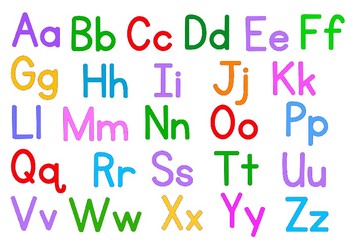Table of Contents
POSITIVELY WICKED ALPHABETS
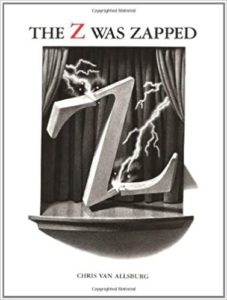 |
Chris Van Allburg’s The Z was Zapped (Houghton Mifflin Harcourt, 1987) is a clever play in 26 acts, in which each letter – appearing in black-and-white on a curtained stage – has something (generally awful) happen to it. A, for example, is caught in an Avalanche, B is Badly Bitten, K is Kidnapped, Y is Yanked offstage with a crook. And you can see by the title what happened to Z. A creative read for ages 4 and up. |
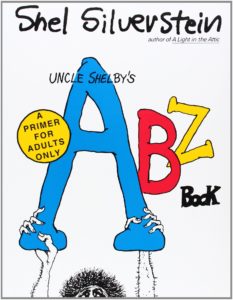 |
By Shel Silverstein, Uncle Shelby’s ABZ Book (Touchstone, 1985) is a wickedly funny alphabet book supposedly for adults only. (“Meet Ernie, the giant who lives in the ceiling. Ernie likes eggs. Catch, Ernie, catch!”) My kids found it hilarious. For all ages, depending on sense of humor. |
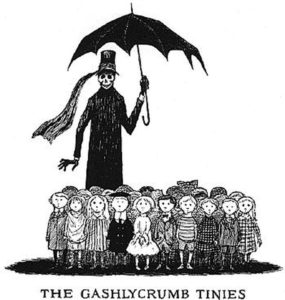 |
In Edward Gorey’s rhyming The Gashlycrumb Tinies (Houghton Mifflin Harcourt, 1997), a succession of Victorian children come to sad, bad ends, from Amy (who fell down the stairs) and Basil (assaulted by bears) to Zilla (who drank too much gin). My macabre children adored and memorized it. For a wide range of appropriately twisted ages. In our house, it was found hysterical by age 7. |
| Also see Gorey’s Thoughtful Alphabets (Pomegranate, 2012), a pair of grimly hilarious 26-phrase stories (“The Just Dessert” and “The Deadly Blotter”), both running from A to Z. (“Apologize. Bewail complications.”) | |
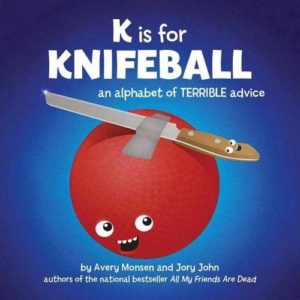 |
By Jory John and Avery Monsen, K is for Knifeball (Chronicle Books, 2012) is a rhyming A to Z collection of truly terrible advice, supposedly directed at (but not really for) kids. B is for Blender. F is for Fire. You can see where this is going. |
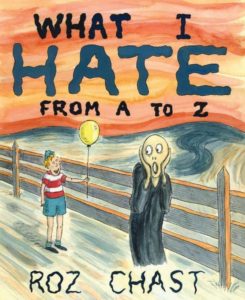 |
In Roz Chast’s What I Hate From A to Z (Bloomsbury USA, 2011), a cartoon compendium of miseries, B is for Balloon (“imminent explosion”), C is for Carnival, G for General Anaesthesia, and S for Spontaneous Human Combustion. For teenagers and adults. Make one of your own. Think therapy. |
ALPHABETS IN THE REAL WORLD
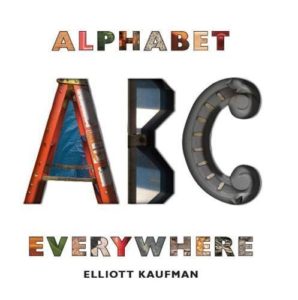 |
By architectural photographer Elliott Kaufman, Alphabet Everywhere (Abbeville Kids, 2012) shows how the letters of the alphabet appear in all sorts of unexpected ways in the world around us, from bridge supports to sidewalk shadows to branches, leaves, and ocean waves. (Would make a great family project.) For ages 3 and up. |
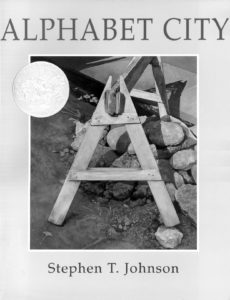 |
Stephen Johnson’s Alphabet City (Puffin, 1999), a Caldecott Honor book, is a wordless tour of the alphabet, finding letters A to Z in construction sites, fire escapes, traffic lights, lamp posts, and church windows. For ages 3 and up. |
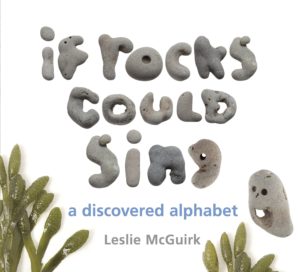 |
Leslie McGuirk’s If Rocks Could Sing (Tricycle Press, 2011) is a “discovered alphabet,” illustrated with rocks in the forms of letters and objects found on the beach near the author’s home. For ages 3-7.
Bound to inspire alphabetical rock collecting. |
| Rock resources! See Geology ROCKS! | |
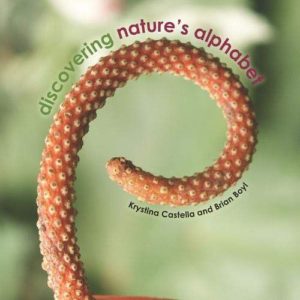 |
By Krystina Castella and Brian Boyd, Discovering Nature’s Alphabet (Heyday, 2006) is a fascinating collecting of color photographs of alphabet images from nature, found in everything from branches, vines, and rocks to seaweed on the beach. (Try taking an alphabet nature walk.) For ages 5 and up. |
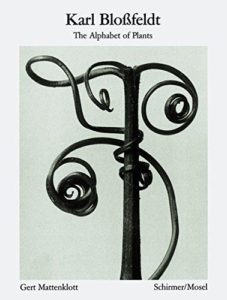 |
Karl Blossfeldt’s The Alphabet of Plants (Schimmer/Mosel, 2007) is not an alphabet, but rather a collection of stunning black-and-white photographs of plant patterns in nature. All ages. |
